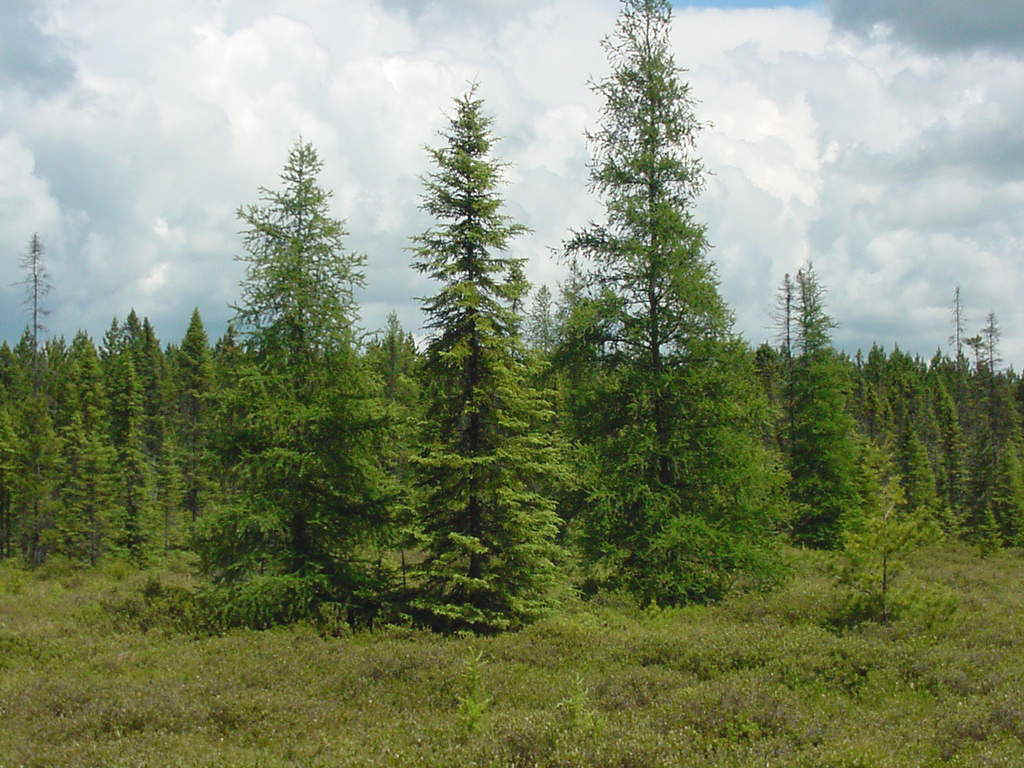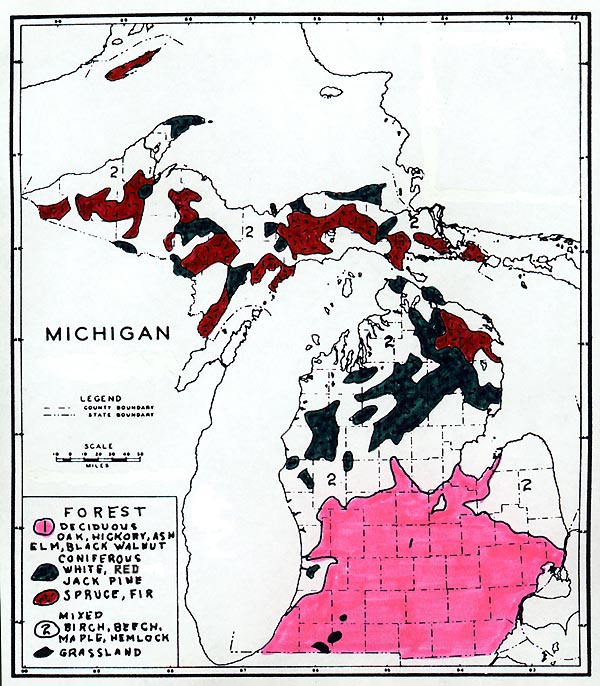SWAMP CONIFERS
Beech-maple stands, along with scattered white and red pines are common in the eastern
UP. However, this region differs from the western Upper Peninsula in that the
wetlands cover a far greater proportion of the landscape. Large, flat tracts of glacial
outwash or lake beds have permitted the development
of extensive bogs, and these lend a remarkably boreal
aspect to parts of the landscape-the Seney Wildlife Refuge
in Schoolcraft County contains some splendid examples. Black spruce and jack pine, with
varying amounts of larch, dominate the more acidic sites, and northern white cedar is
found on wetlands that have slightly more-mineralized groundwater.
Many bog conifers are growing in wet soil with peat and muck
on top of mineral substrate. Such "peat swamp forest" or also known simply
as "wetland" is characterised by its unique kind of vegetation capable of
growing under water-logged condition. The water-logged condition, which covers almost
entirely of peat swamp forest, is derived exclusively from rainwater. This condition
creates an anaerobic environment (absence of oxygen) which affects the plants and soil.

Source: Photograph courtesy of Randy Schaetzl, Professor of Geography -
Michigan State University

Source: Unknown
Parts of the text on this page have been modified from L.M. Sommers' book entitled, "Michigan: A Geography".
This material has been compiled for educational use only, and may not be reproduced without permission. One copy may be printed for personal use. Please contact Randall Schaetzl (soils@msu.edu) for more information or permissions.